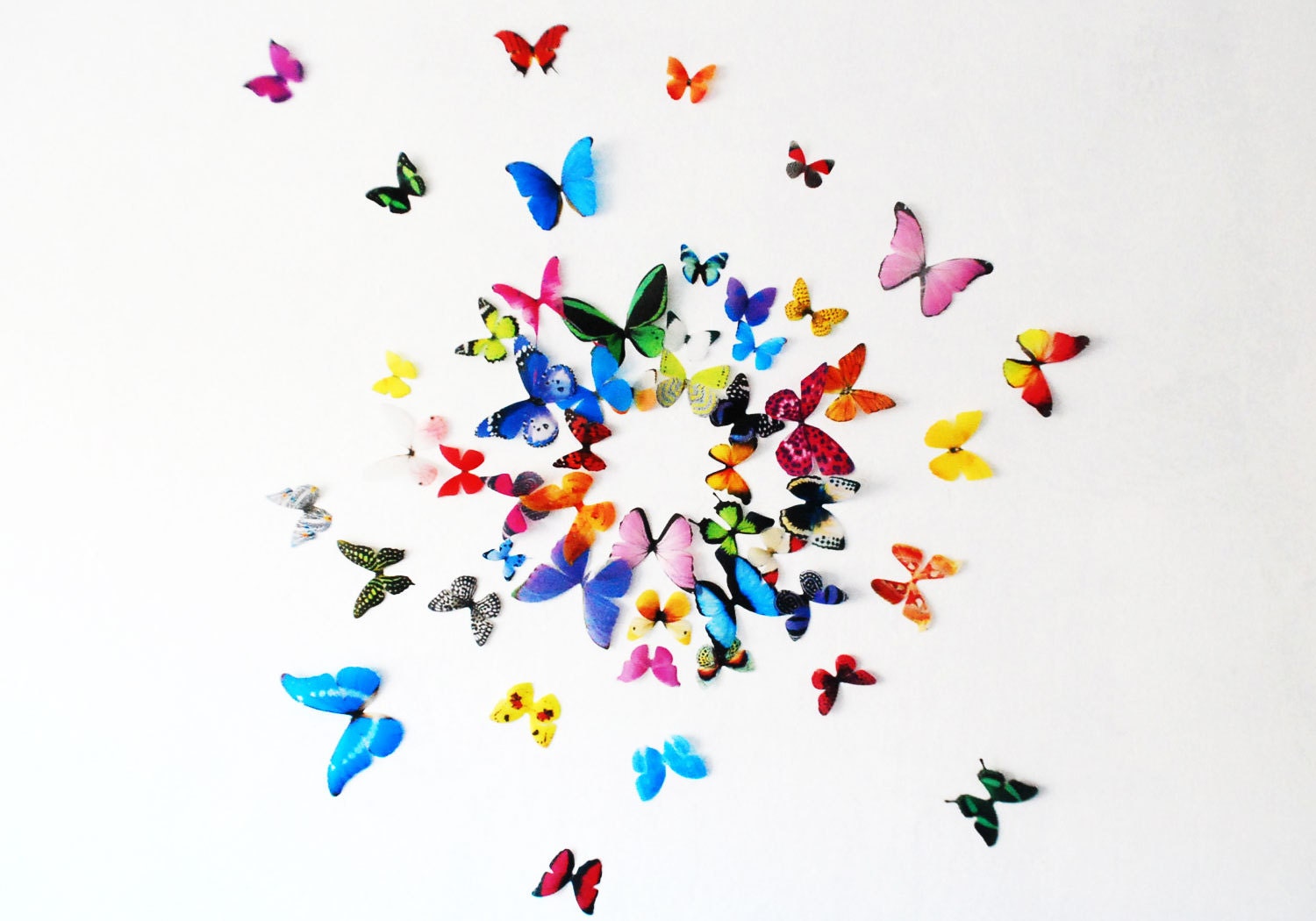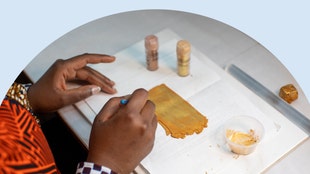Whether you knit cozy hats in your spare time, design wedding invites for friends or find the best mid-century treasures at your local flea market, Etsy is a great place for you to start a creative business. When you open a shop on Etsy, you join a thriving community of makers, craftspeople and curators. Opening your own shop might sound daunting, but you can get up and running in a few simple steps.
When Bonnie Kaye Whitfield opened her shop Bonnie Kaye Studio in 2014 in Philadelphia, Pennsylvania, she was excited to be starting a business on her own. She had started an Etsy shop in the past, but the Etsy marketplace had grown and the tools available to sellers had changed. Now, Bonnie knew she would need to put in some extra effort to make her shop stand out. "I looked at a lot of product photos, but mostly products that are similar to mine, and took notes," she says. "I also read a lot of other product descriptions to find a layout that I thought worked for me." After opening her shop, she started to get impatient; the screenprinted linens and wrapping papers she listed weren’t getting as many views as she hoped. It might have been a slow start, but since listing her first item in October 2014, Bonnie has learned a lot. Read on for her helpful tips and a checklist of the essential items you’ll need to open your shop so you can start strong.

1. Name your shop
Choosing a shop name is the first step you’ll take in creating an identity for your business on Etsy. Your shop name will be displayed at the top of your shop—the page that shows everything you have for sale—and it will be part of the URL or web address of your unique Etsy shop. You can’t use punctuation or spaces in your Shop Name and it can’t be longer than 20 characters.
Every shop on Etsy has an original name. No two shop names are the same. If you’re struggling to come up with a name for your business that hasn’t been used already, try some of these ideas:
- Add “workshop,” “studio,” “and Co” or something similar to the name you were hoping to use.
- Use your name as your shop name. You can combine these first two tips like Bonnie Kaye Whitfield did in her shop, Bonnie Kaye Studio. “One reason I used my name is that it’s inherently unique to the brand I’m creating,” Bonnie says. “It’s also flexible enough to apply to anything I decide to create and sell.”
- Pick something memorable that speaks to the vibe you hope to create for your shop. For example, Flirting With Yellow speaks to the colorful aesthetic of Liz Payne’s art, which she sells from Sydney, Australia.
Don’t worry about making your shop name perfect. You can come back to this step and change your shop name as many times as you like before you complete the shop open process. After you’ve opened your shop, you can instantly change your name one time. If you need to change it again in the future, submit a request to Etsy Support.
Advanced Reading:
2. Add some listings
If you’re opening a shop, you probably have an idea of what you plan to sell on Etsy. Once you’ve picked your shop name, the next step is to create a listing for each unique item you want to sell in your shop. There are many details you can add to a listing, but these are the essentials you’ll need for your first listings. After you open your Etsy shop, you can dig deeper into the options available.
Photos
To create a listing, you’ll need photos of the handmade product, vintage item, or craft supply you want to sell. Product photos are something you can experiment with and improve upon as your shop grows. A basic listing should include 10 photos. When photographing your item, be sure to include:
- A well lit, clear photo of the item you plan to sell
- A photo that shows alternate angles of the product so shoppers can make an informed purchase
- A photo showing any unique details of the product. Try to answer any questions a shopper might have about texture, color, or the techniques used.
- A photo that shows the scale of the item. Styling a photo with other recognizable props or by having volunteer models hold it in their hands can help. For example, Bonnie styles the photos for her linen table runner with a teacup and saucer.
Use all 10 available photos and try to shoot your products using natural daylight instead of a flash.
Advanced Reading:
Title
Next, you’ll give your listing a title. Think like a shopper and use words and phrases that buyers might use when searching for your item. Use different words and phrases to describe your product, including its color (white, blue, rainbow), materials (linen, slate, leather), uses (living room decor, bridal bouquet), techniques (hand-painted, embroidered, stamped, knit), etc.
When Bonnie started her Etsy shop, she named each of her patterns after friends, for example "The Hannah Tote Bag," and used that as her listing title. Over time she realized it was better to use descriptive keywords to help her listings appear in search. Now, she uses titles like “Wrapping Paper - Floral Gift Wrap in Black, 3 Sheets or Single Roll, Hand Printed Giftwrap, Floral Kraft Wrapping, Paper Table Runner” that are loaded with keywords.
About this listing
Now you’ll answer some questions about what your product is and who made it. Etsy uses this information to label your item as handmade, vintage or supply. Learn more about what you can sell on Etsy.
Category
Choosing the right category will help shoppers find your item in search or when browsing category pages. Choose the category that best matches what your item is. For example: Bonnie chooses the Paper & Party Supplies category for her wrapping papers and Home & Living for her pillow covers.
Based on which category you choose, you’ll be able to add more attributes to your items, such as the size. You’ll also be able to specify the item’s color and whether it’s related to a specific holiday (such as Christmas decorations) or whether it makes a good gift for a specific occasion (such as a wedding gift). Etsy uses this information to help shoppers find relevant items when they search.
Price
Putting a price on an item you’ve made or collected can be nerve-racking. First and foremost, your price should account for the cost of the materials that went into making the item and your time. If you’re unsure, try searching for similar items on Etsy to see what the average price point is. For vintage items, research going rates for the brand or time period. An important note: The currency you choose when starting your shop will be the currency your prices are listed in. Once you complete all four steps and open you shop, you can change your listing currency if necessary.
Advanced Reading:
Description
Your listing description helps shoppers understand what you’re selling and what makes it special. Use short, descriptive sentences to describe what your product is and how it can fit into a buyer’s life.
- Start with a few sentences about the product, how shoppers might use it, and what makes it unique.
- Include some information about the techniques you used to make the item.
- Give shoppers the specific details they need to know before making a purchase, such as dimensions and shipping timeline.
Advanced Reading:
Variations
If your product is available in different colors, sizes or styles, you can add listing variations. You can also link listing photos to your variations so shoppers can see the options you offer.
Advanced Reading:
Shipping
It might seem difficult to estimate your shipping costs before ever taking the package to the post office. If you’re in the United States, you can use the Price Your Postage Tool to get an estimate based on the size of the item. You can also purchase your postage right from your Shop Manager with Etsy Shipping Labels.
Advanced Reading:
Tags
Using descriptive tags helps shoppers find your item on Etsy. Look at the keywords you used in your title and repeat them in your tags to strengthen the power of that search term. Think about all the ways a shopper might search for your item.
- Phrases are better than single terms. For instance, use “slim leather wallet” instead of “slim,” “leather,” and “wallet.”
- Get creative about how your item could be used. Try occasion- or recipient-based tags such as “co-worker gift” or “wedding jewelry.” (Pro tip: If you’ve already added an occasion, color, or other attribute to the category section of your listing, you don’t need to repeat that same information in your tags.)
- Make sure to use all 13 available tags. The more tags you enter, the more likely you are to appear in a shopper’s search.
Advanced Reading:
Add more listings
Once you’ve created your first listing, keep going! Adding more listings increases the chances of shoppers finding your shop. If you only have a few products to sell right now, consider creating separate listings for each color or variation you can offer. A full page of listings gives shoppers more to browse and makes your shop look more professional.
3. Get paid
The last section you’ll need to complete before you can open your shop is information about your bank. Etsy uses this information to set up Etsy Payments, Etsy’s payment processing system that allows you to accept PayPal, Etsy Gift Cards, major credit cards, and more. Etsy also asks for your bank account information so you can receive periodic deposits of the money you’ve earned in your Etsy shop.
Depending on what country you are in, you might need to enter your credit card number to open your shop. Etsy keeps this card on file as a means of identity verification. You can use it to pay your Etsy bill—including the $0.20 listing fee and 6.5 % of the price that Etsy takes when your product sells—or choose to pay your bill via PayPal.
Advanced Reading:
4. Open your shop
Congrats! Now you’re ready to open your shop. Once your shop is open, shoppers will be able to find your listings when they search on Etsy. You can view your shop by going to your new web address: etsy.com/shop/[yourshopname] (type your new shop name after the last forward slash). There’s more you can do to customize you shop after you open, but you’ve taken the first step in running a business on Etsy. Your Etsy shop will continue to be a work in progress as you add more items and learn what works for your products.
“Success, no matter what that looks like to you, is not going to happen overnight,” Bonnie says. It might feel like there’s a lot to learn and do now, but keep in mind that every successful small-business owner was once where you are, too. After more than a year of operating an Etsy shop on her own — and more than 100 sales, Bonnie still has to remind herself that running a successful shop is a process and perseverance is key. “But, it’s also a great feeling of pride and accomplishment,” she says.
Ready to open your Etsy shop? Get started today.
Advanced Reading:
 Words by Taylor Combs
Words by Taylor Combs




